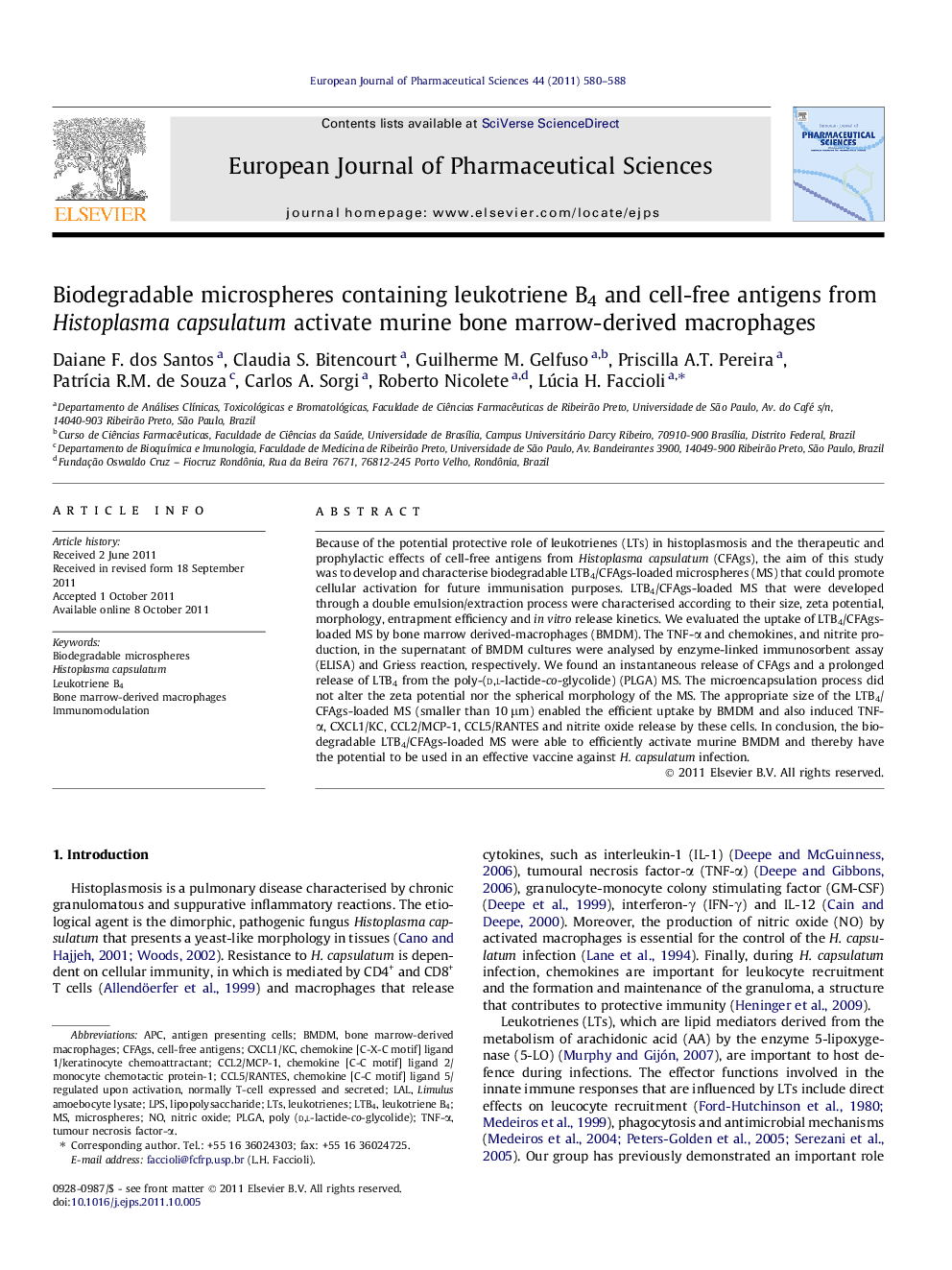| Article ID | Journal | Published Year | Pages | File Type |
|---|---|---|---|---|
| 2481213 | European Journal of Pharmaceutical Sciences | 2011 | 9 Pages |
Because of the potential protective role of leukotrienes (LTs) in histoplasmosis and the therapeutic and prophylactic effects of cell-free antigens from Histoplasmacapsulatum (CFAgs), the aim of this study was to develop and characterise biodegradable LTB4/CFAgs-loaded microspheres (MS) that could promote cellular activation for future immunisation purposes. LTB4/CFAgs-loaded MS that were developed through a double emulsion/extraction process were characterised according to their size, zeta potential, morphology, entrapment efficiency and in vitro release kinetics. We evaluated the uptake of LTB4/CFAgs-loaded MS by bone marrow derived-macrophages (BMDM). The TNF-α and chemokines, and nitrite production, in the supernatant of BMDM cultures were analysed by enzyme-linked immunosorbent assay (ELISA) and Griess reaction, respectively. We found an instantaneous release of CFAgs and a prolonged release of LTB4 from the poly-(d,l-lactide-co-glycolide) (PLGA) MS. The microencapsulation process did not alter the zeta potential nor the spherical morphology of the MS. The appropriate size of the LTB4/CFAgs-loaded MS (smaller than 10 μm) enabled the efficient uptake by BMDM and also induced TNF-α, CXCL1/KC, CCL2/MCP-1, CCL5/RANTES and nitrite oxide release by these cells. In conclusion, the biodegradable LTB4/CFAgs-loaded MS were able to efficiently activate murine BMDM and thereby have the potential to be used in an effective vaccine against H. capsulatum infection.
Graphical abstractFigure optionsDownload full-size imageDownload as PowerPoint slide
